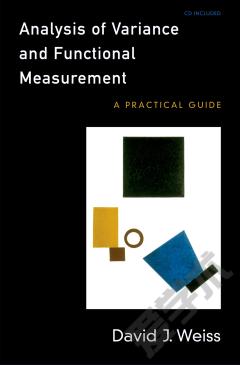Analysis of Variance and Functional Measurement —— A Practical Guide
----- 差异与功能测量分析:实用指南
Statistics courses, particularly those on analysis of variance, have become increasingly important in undergraduate and graduate curricula in psychology. Although professionals and students need to have facility with numbers where data analysis and statistics are concerned, many of them sometimes falter when it comes to translating results into reportable, meaningful prose. Thus, they need thoughtful, readable guides to designing experiments, performing analyses, interpreting results correctly, and reporting results statistically and in plain language. David Weiss has created such a guide from the course on statistics for psychology students that he has taught for over 30 years. Beginning with the basics, then proceeding to more advanced concepts, and including exercises and discussions of how to present the results, this volume explains ANOVA, probably the most common set of statistical techniques for analyzing the results of controlled or quasi-controlled experiments. The volume will also contain a software package, CALSTAT, designed to help students learn statistics more easily than general packages like SPSS or SAS. The volume will be an important resource for students and professionals in the social, behavioral, and neurosciences.
{{comment.content}}








 京公网安备 11010802027623号
京公网安备 11010802027623号